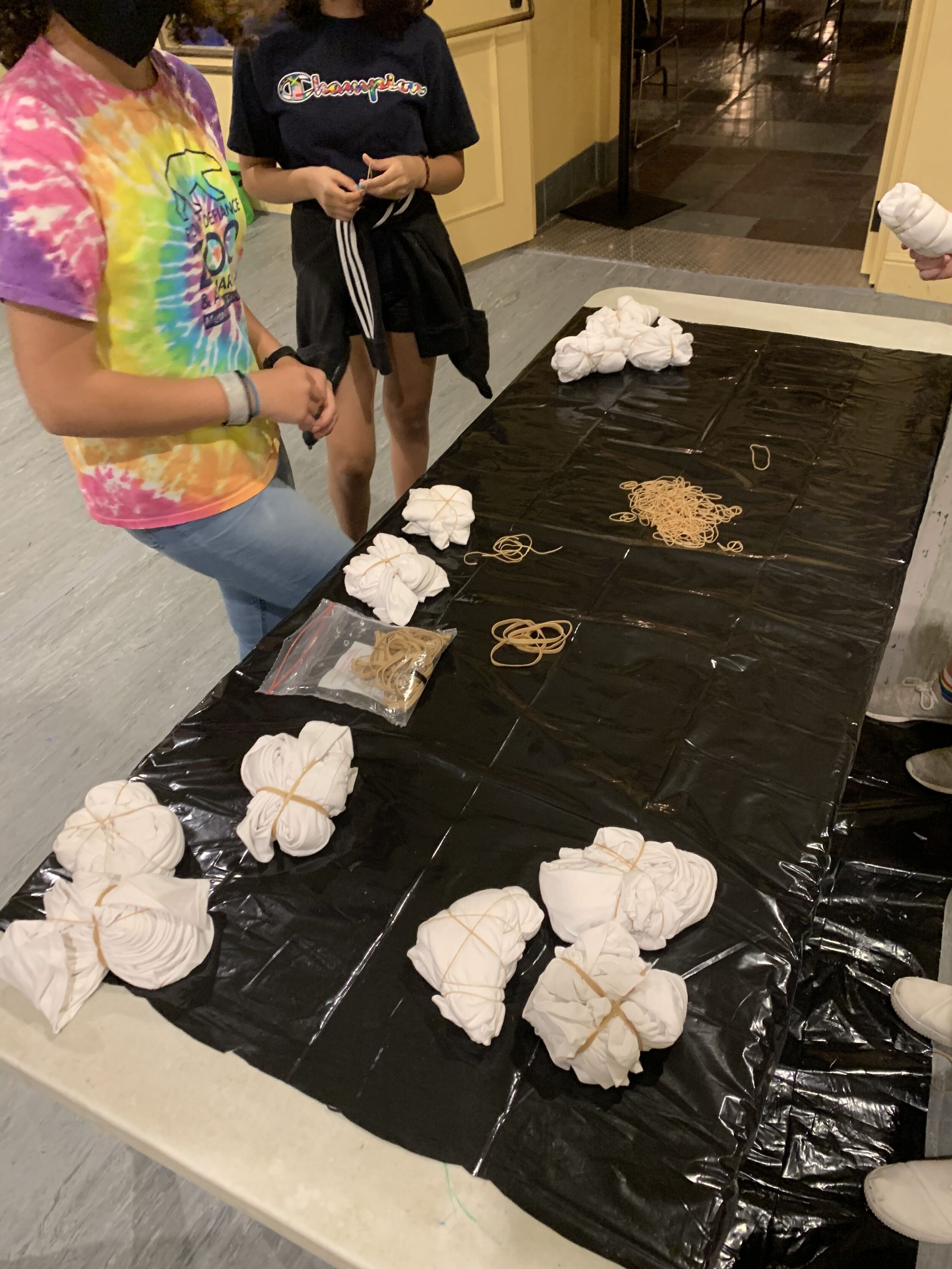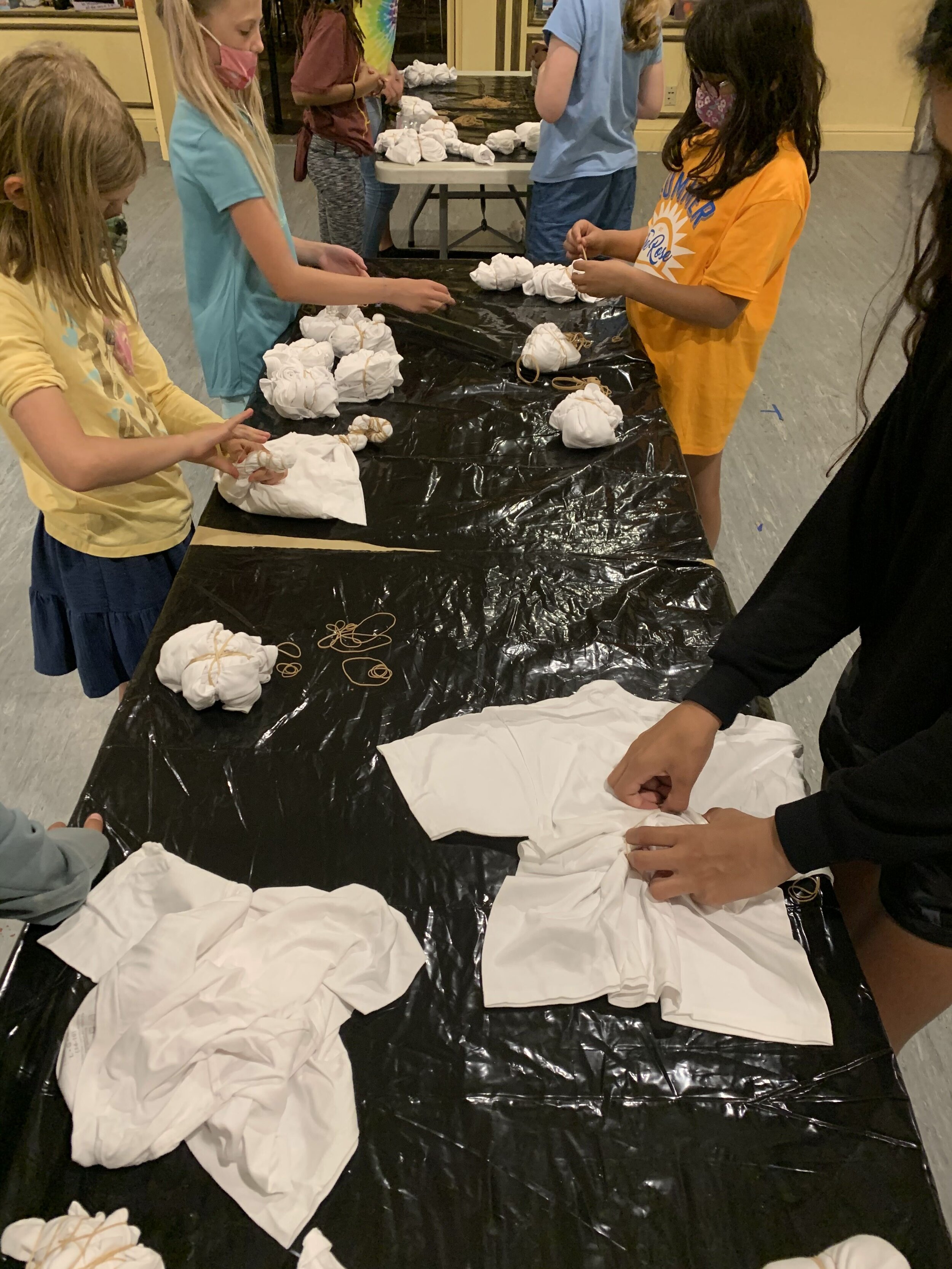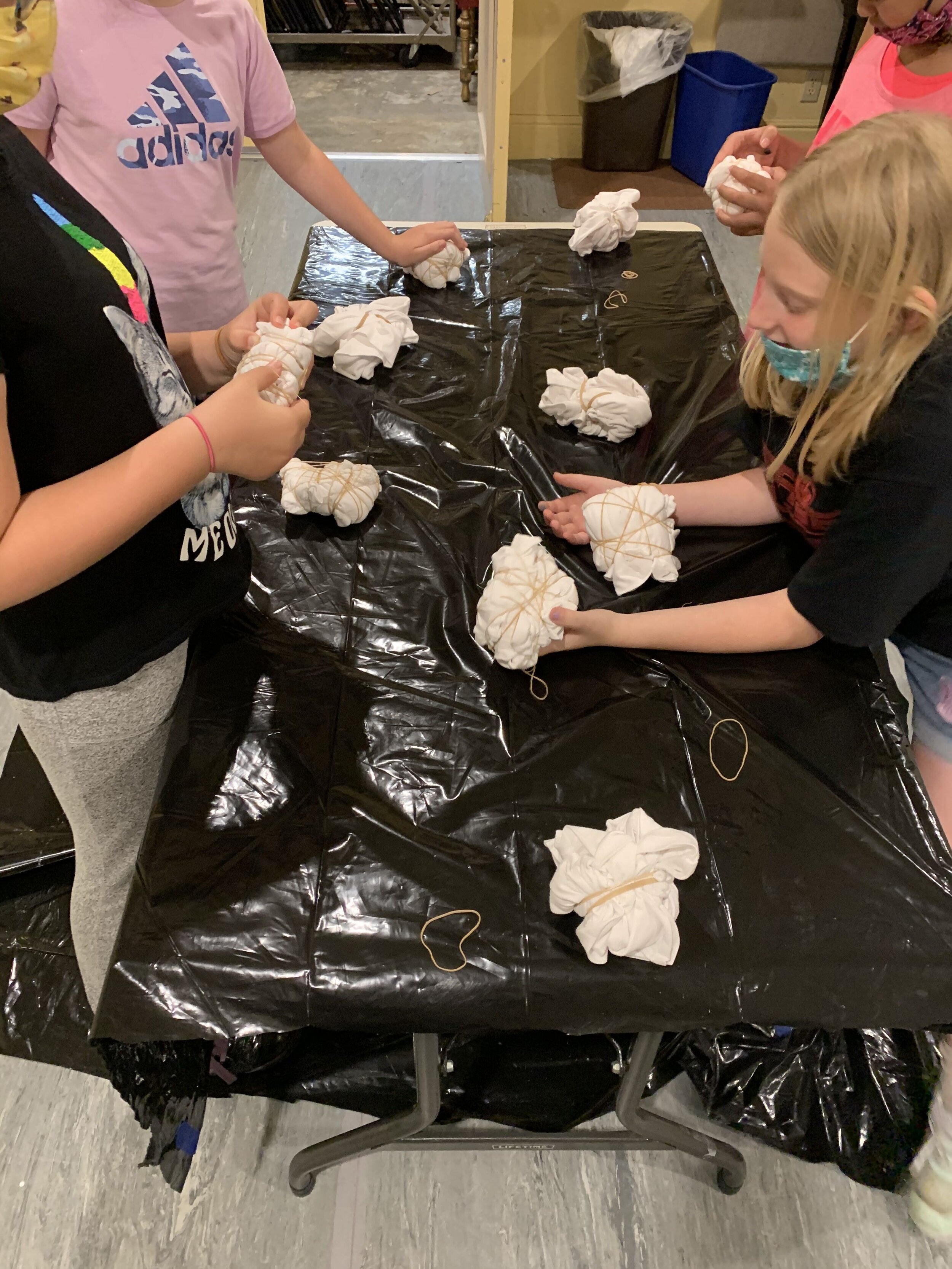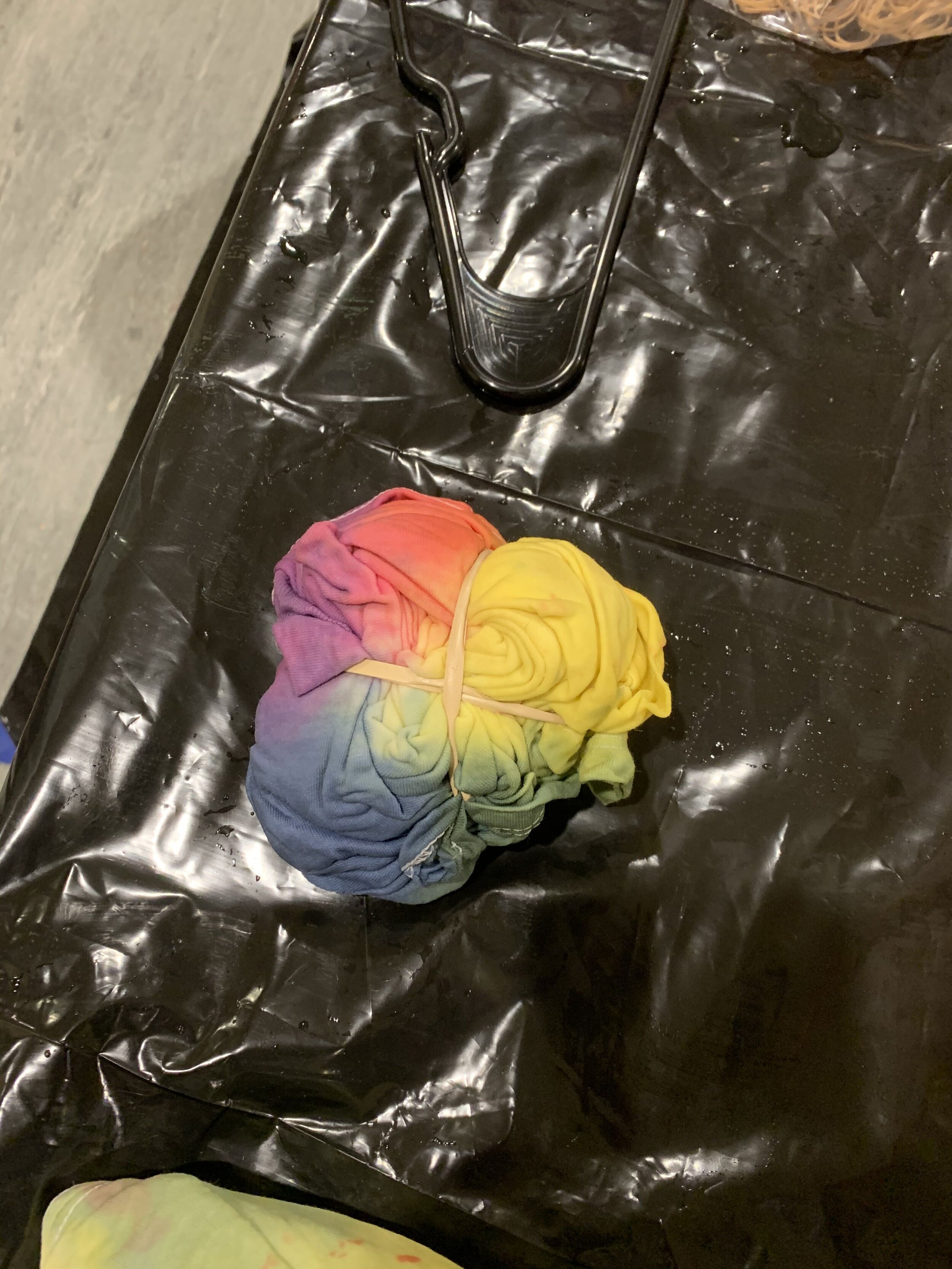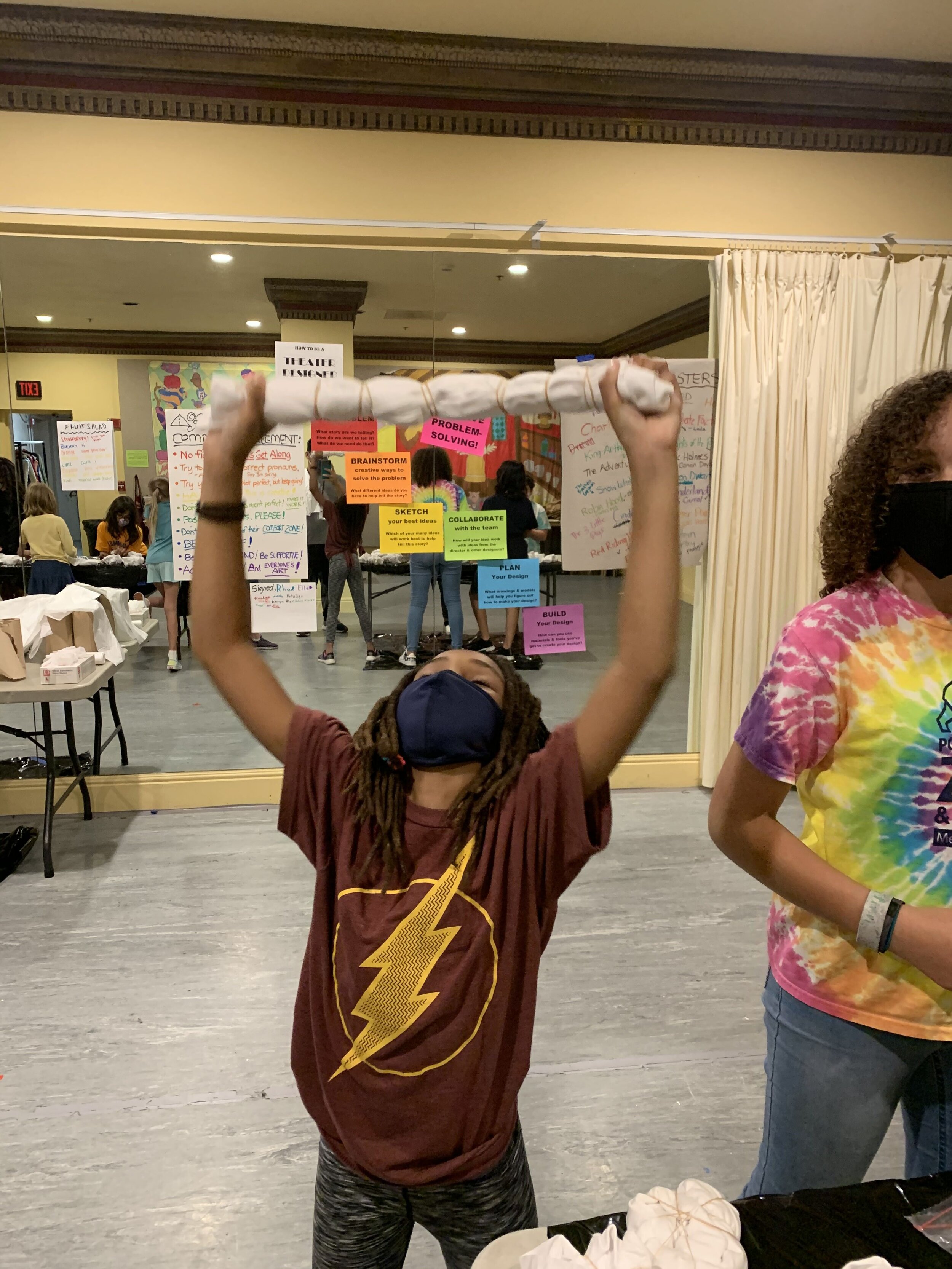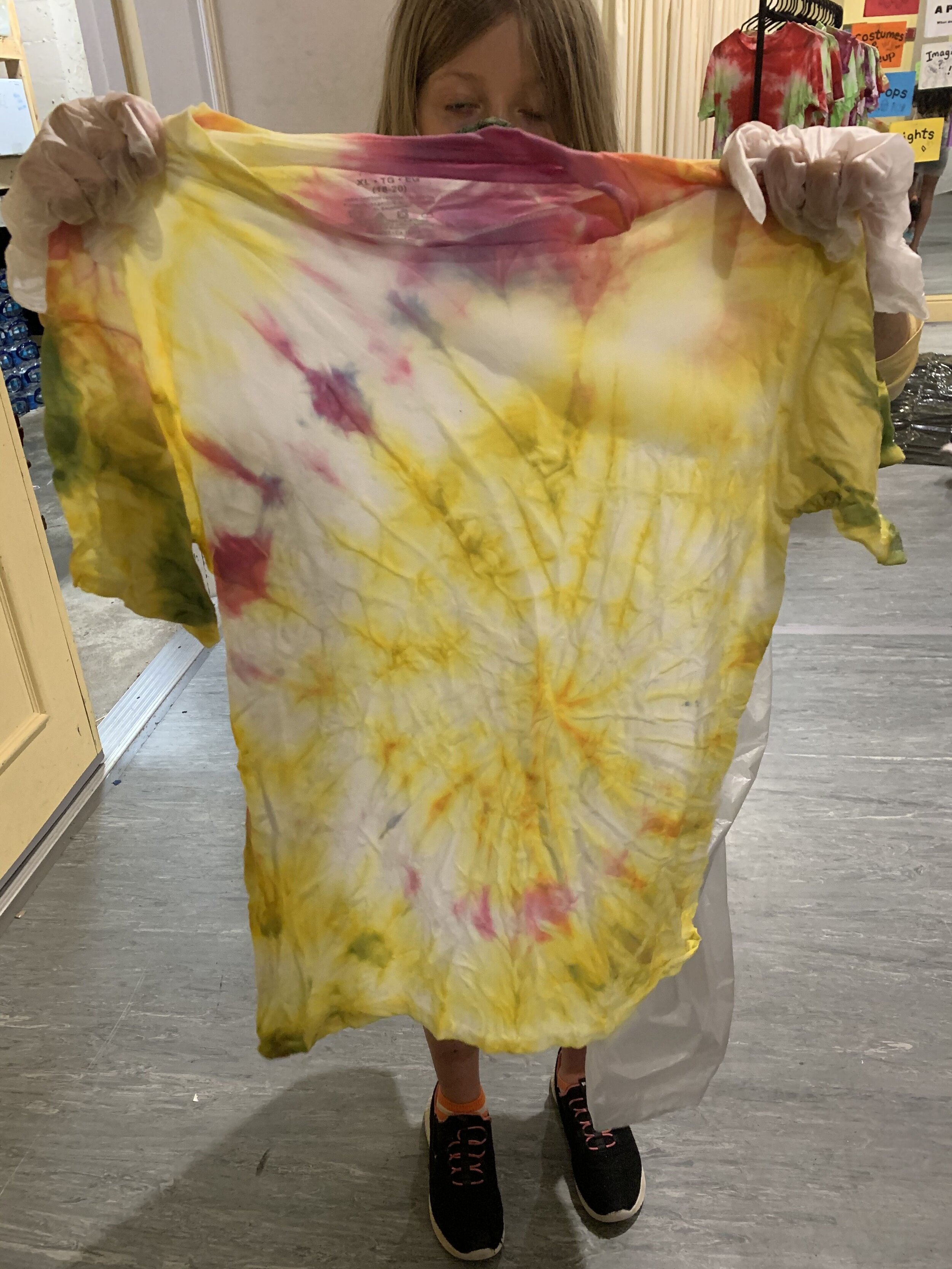the Rose Theater
Intern Teaching Artist
Summer at the rose
During the summer of 2021, I spent 10 weeks in Omaha as a Teaching Artist Interns with The Rose Theater. With over 300 hours of hands-on experience directing, teaching, lesson planning, and meeting with Rose education staff members, this experience helped me jump back into in-person teaching after COVID. My experiences included directing youth, designing with youth, teaching themed creative drama classes, and directing students in musical theatre/choreography among others.
Art of Theatre Design
Coming from a technical background, I was thrilled to be able teach two sessions of the Art of Theatre Design class. In this week-long class, students explored introductory technical theatre concepts, what it means to be a designer, toured the theater, and collaborated to design and create projects that would be used in the summer youth productions. Productions worked on included Conservatory, If Tweens Rans the World, Camp Rock, The League of Superzeroes, and Frog & Toad Kids. Prior to the beginning of summer, my co-teacher and I discussed the needs of the productions, did some preliminary sketches and prototypes, then returned during our planning to finalize the projects that we could give to the students.
While some designing was done ourselves, it was vital that our students could take the examples and take ownership of their own art. For example, in Camp Rock and Superzeroes, each production needed costumes in which we decided on tie-dyed t-shirts with student-created logos; this was my first solo lesson of the summer! I had experience being a dyer, so the challenge was how to take professional skills and meet 9-13 year olds where they were with skills familiar to them. I walked through why we dye for the theatre, a brief overview on color theory, and jumped into Shibori– a Japanese form of resist dyeing typically used with thread, folding, or wood.
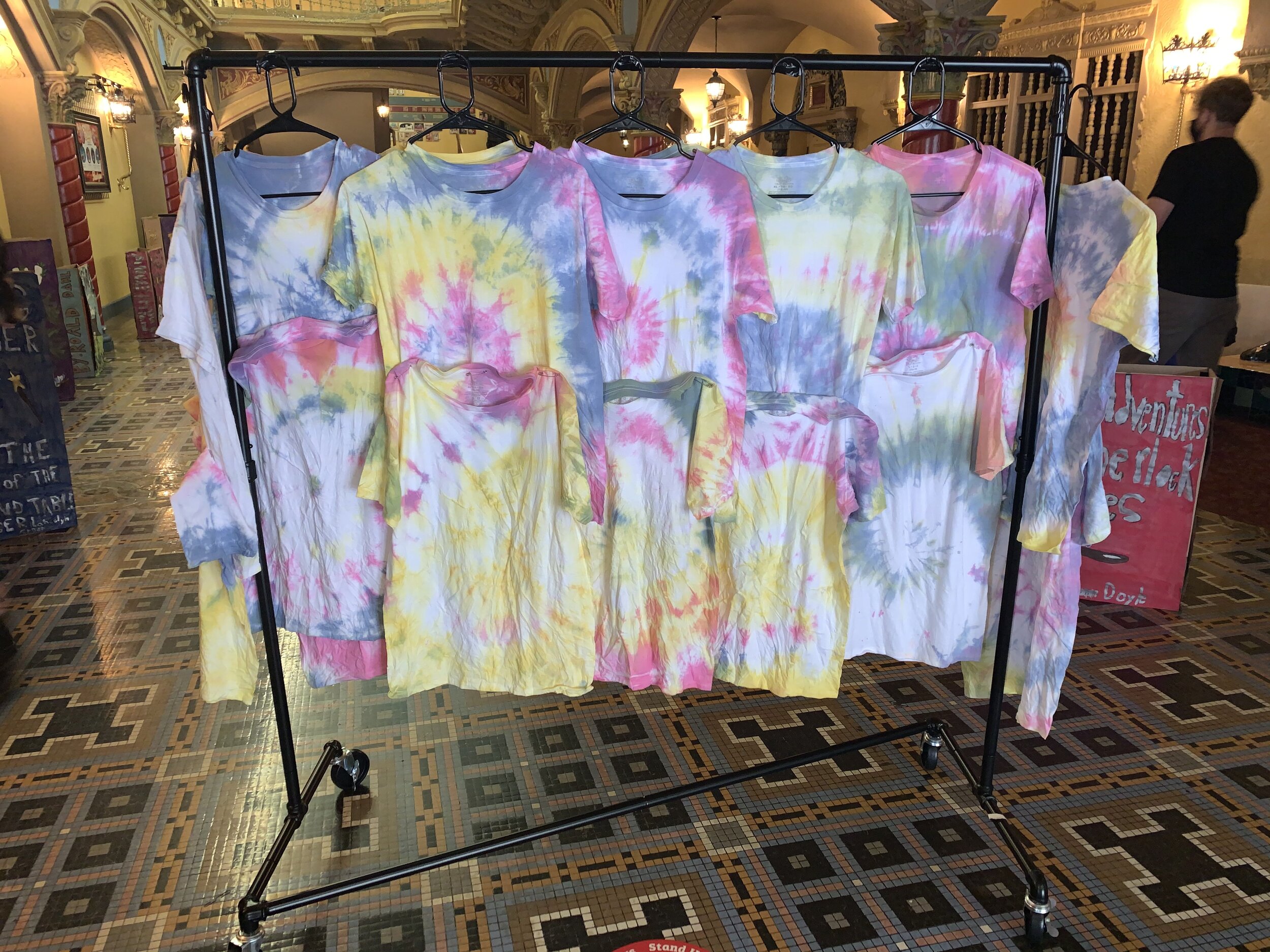
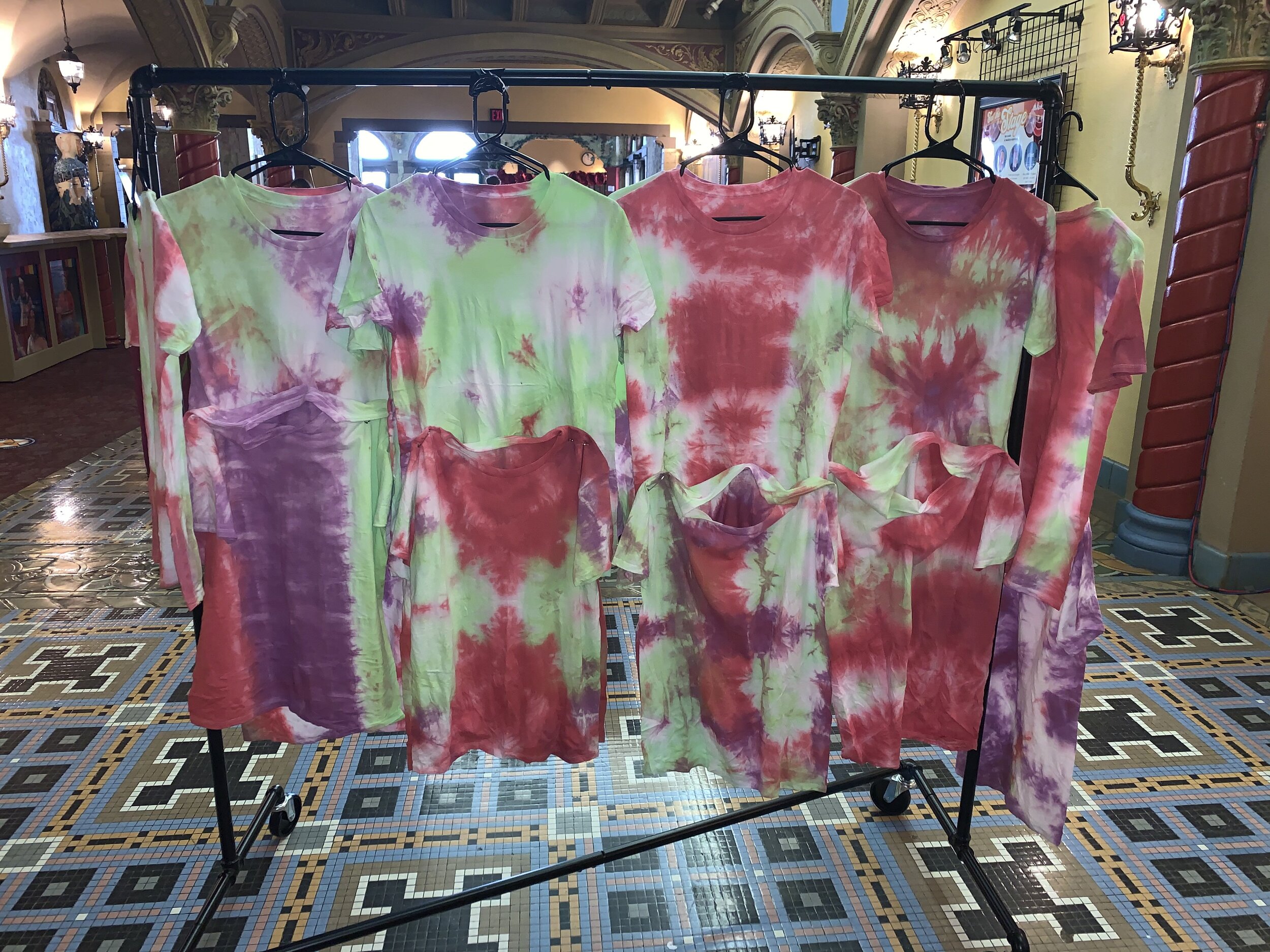
I chose to provide students with rubber bands in place of needles and thread and also introduced folding techniques. These materials were most likely very familiar to the age group and worked well in the finished product (seen in the slideshow)! Rit dyes were used in place of tie-dye liquid to achieve bold colors requested by the directors and so students could get a chance to work with the materials dyers and artisans actually use. Most of the time when kids want to tie-dye shirts, they go straight to YouTube and use what’s easy and accessible at the store, but our students got the chance to see how it’s done in the theatre. Overall, this part of the class challenged me to take a skill I had learned at a higher level and introduce it to young people in a that is way familiar to them.
Another unique takeaway of mine was approaching technical theatre concepts from the lens of acting. The basic acting tools (body, voice, and imagination) were taught to the students and then from there, technical elements were synthesized. Imagination games pulled out creativity to transform ordinary object into props for a scene. Playing movement games challenged students to see what is required of a costume designer. If a character is a turtle, what would the costume require? What would be necessary for the actor to comfortably and safely move around the space? This was a new approach for me and is definitely something I plan to adapt for all ages.
Summer as a whole..
Going a whole school year with limited student interaction, I was thankful to do a ton of teaching within a short amount of time. This summer felt like a jampacked speed through of everything I lost due to the pandemic. At the beginning of the summer, nerves were high since it had been almost a year since I taught a lesson myself. I observed from my first coteacher that there was nothing to worry about besides the good of the students; I pushed my nerves aside and placed my attention on the needs, wellbeing, and engagment of my students. From there, it had felt like just yesterday that I was leading a group of students.
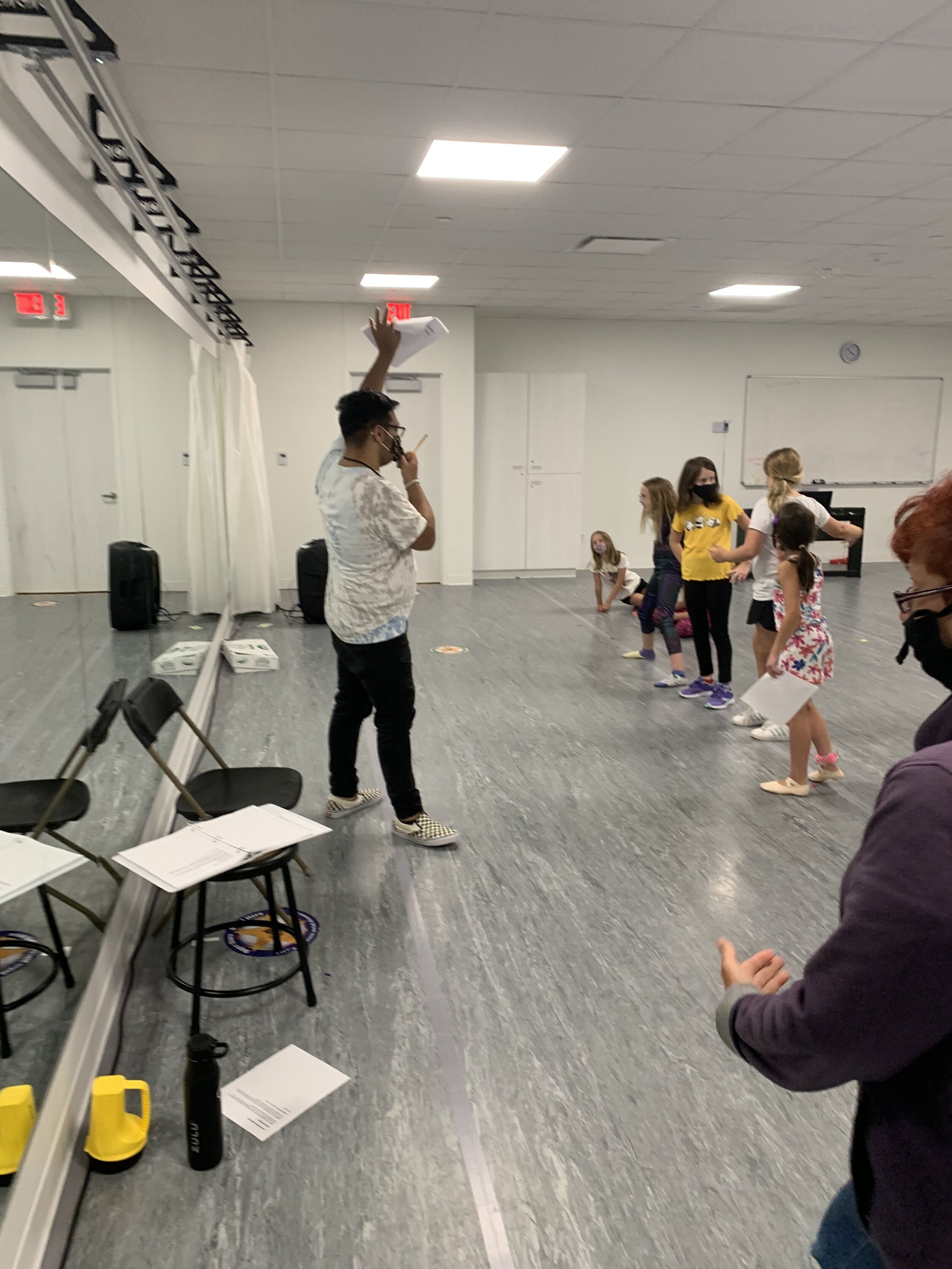

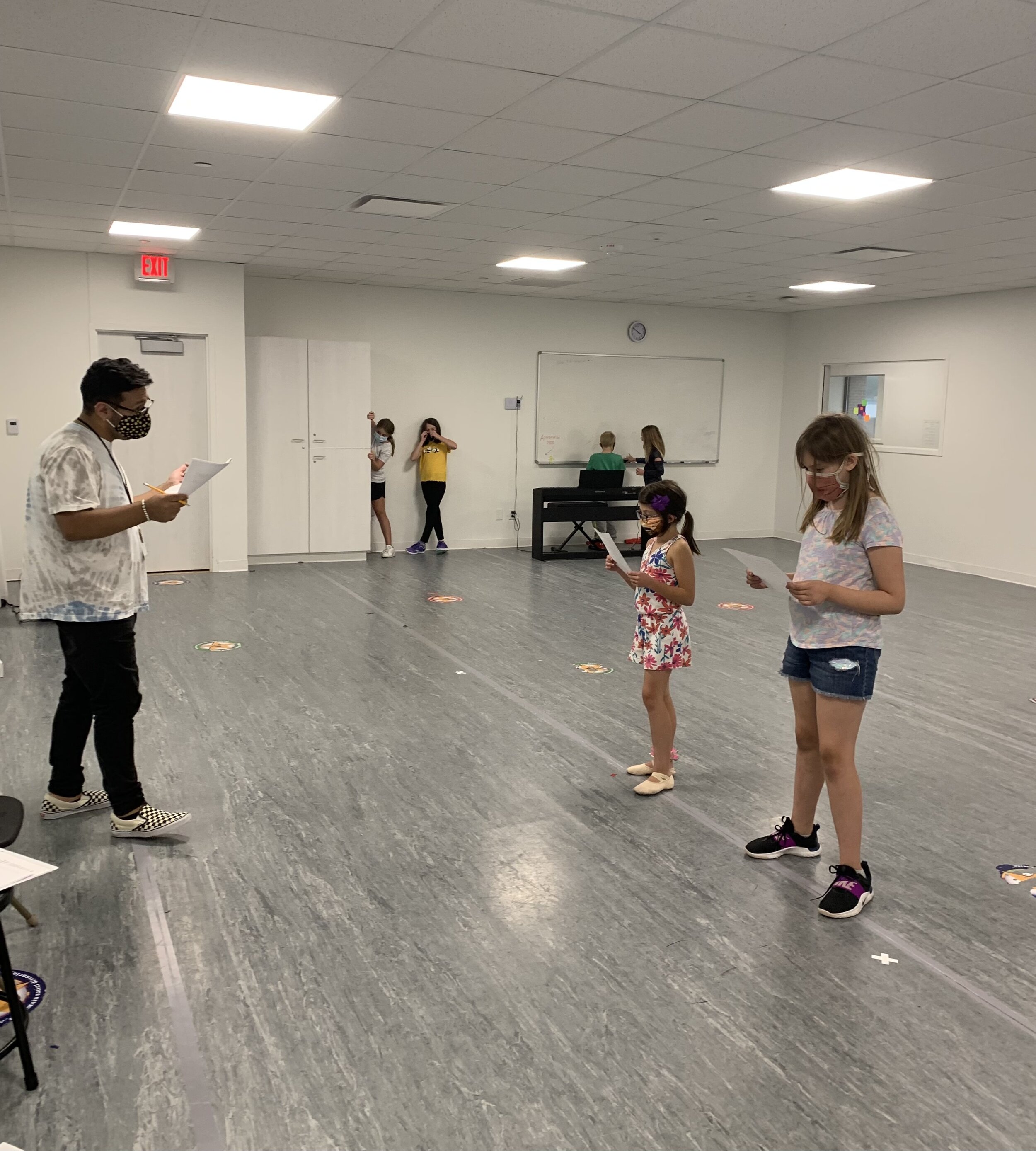
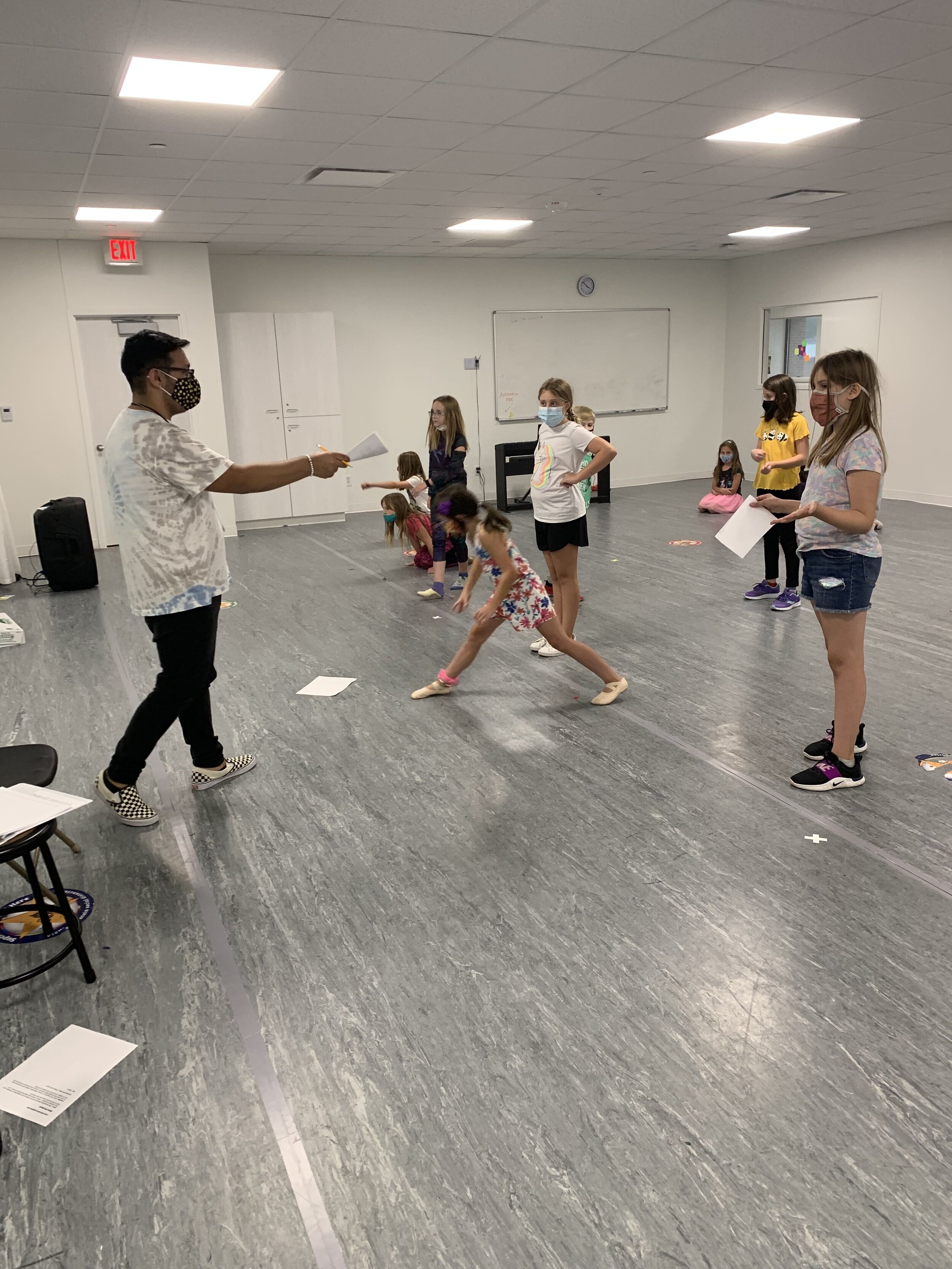
Though I wasn’t assigned to a specific production, I did have three classes where I got to experience directing youth. With Alice in Wonderland, having to put together a youth production in 4 days was a new challenge for me, but the class was able to bring their best selves to rehearsal each day and embraced the direction given to them. Descendants Song and Dance brought uncharted waters in that my only musical theatre experience was being a spotlight op. I observed how to teach choreography and music, and brought my directing skills to the mini scenes in between numbers and to the running of the show. Some of the most fun I had this summer was in the Scene Work class. This ensemble loved every minute of the acting games, lessons, and rehearsing. I got to work closely with young people in small scenes, directing and challenging them every step of the way. Some big takeaways from these classes were being able to encourage big acting choices, bringing the energy that you want to see in the rehearsal room, really listening to the ideas that the young people are bringing to the table, and being sure to involves as many people as possible; always emphasize the ensemble.
ALICE IN WONDERLAND






SCENE WORK
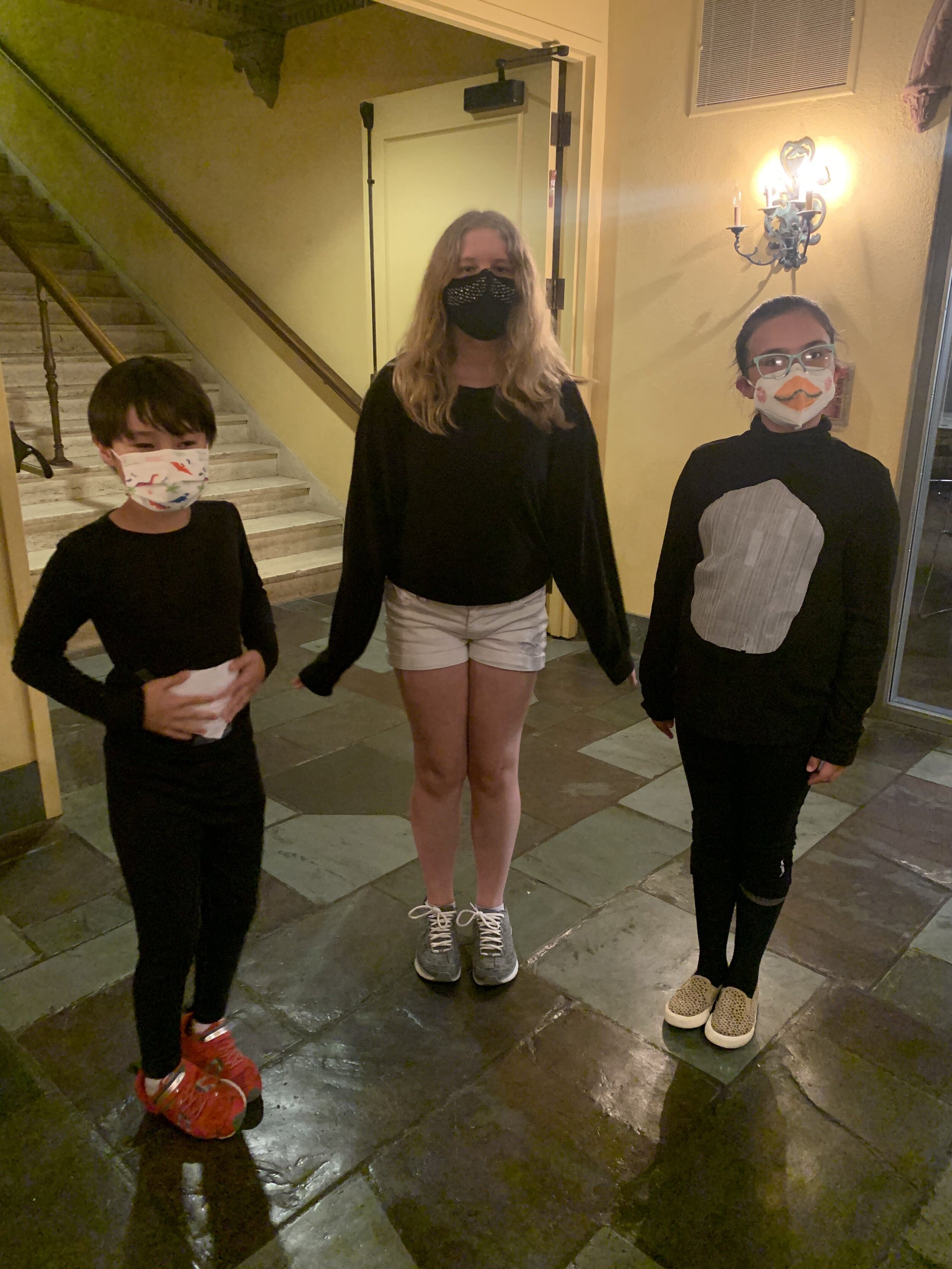
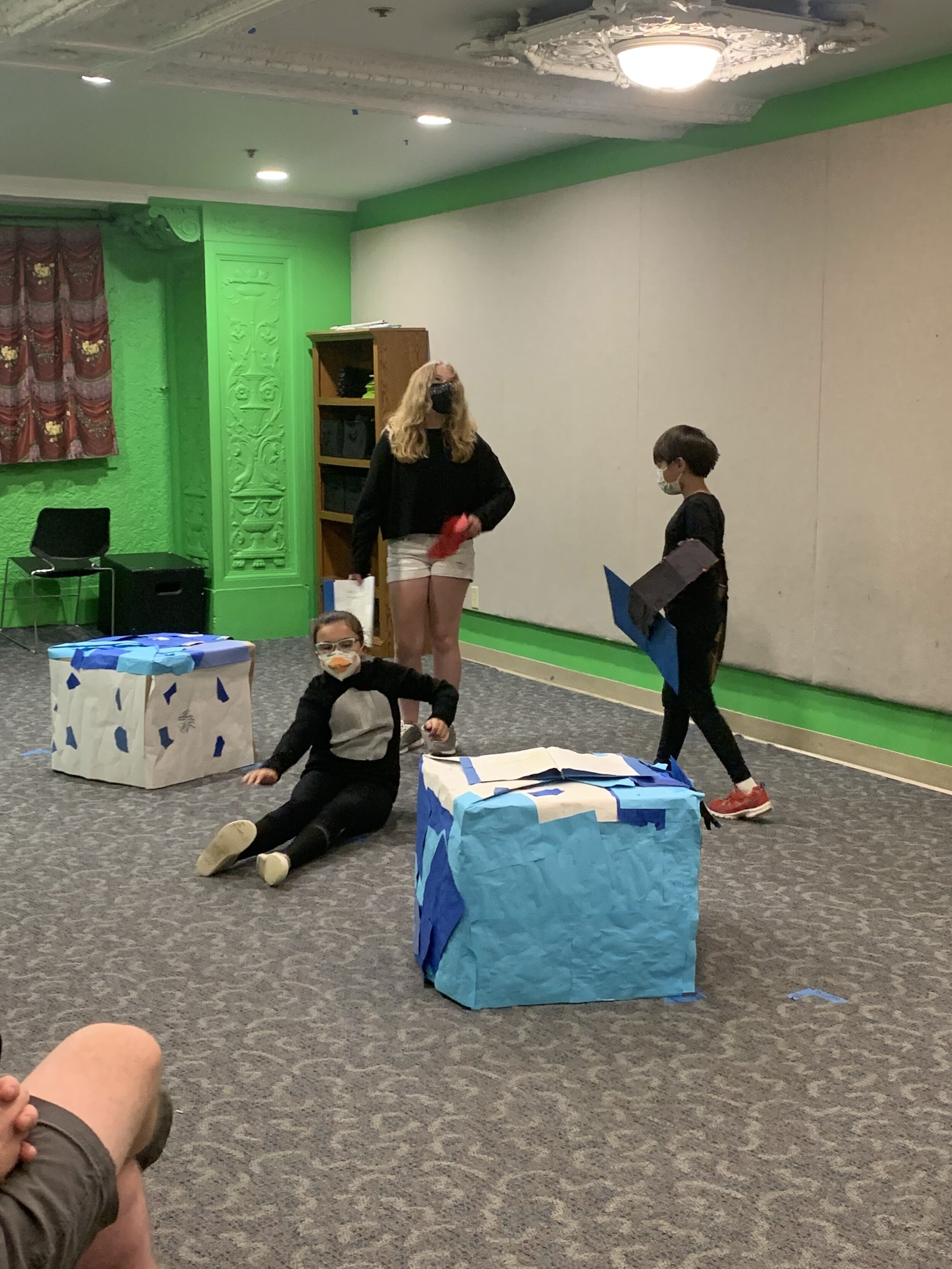
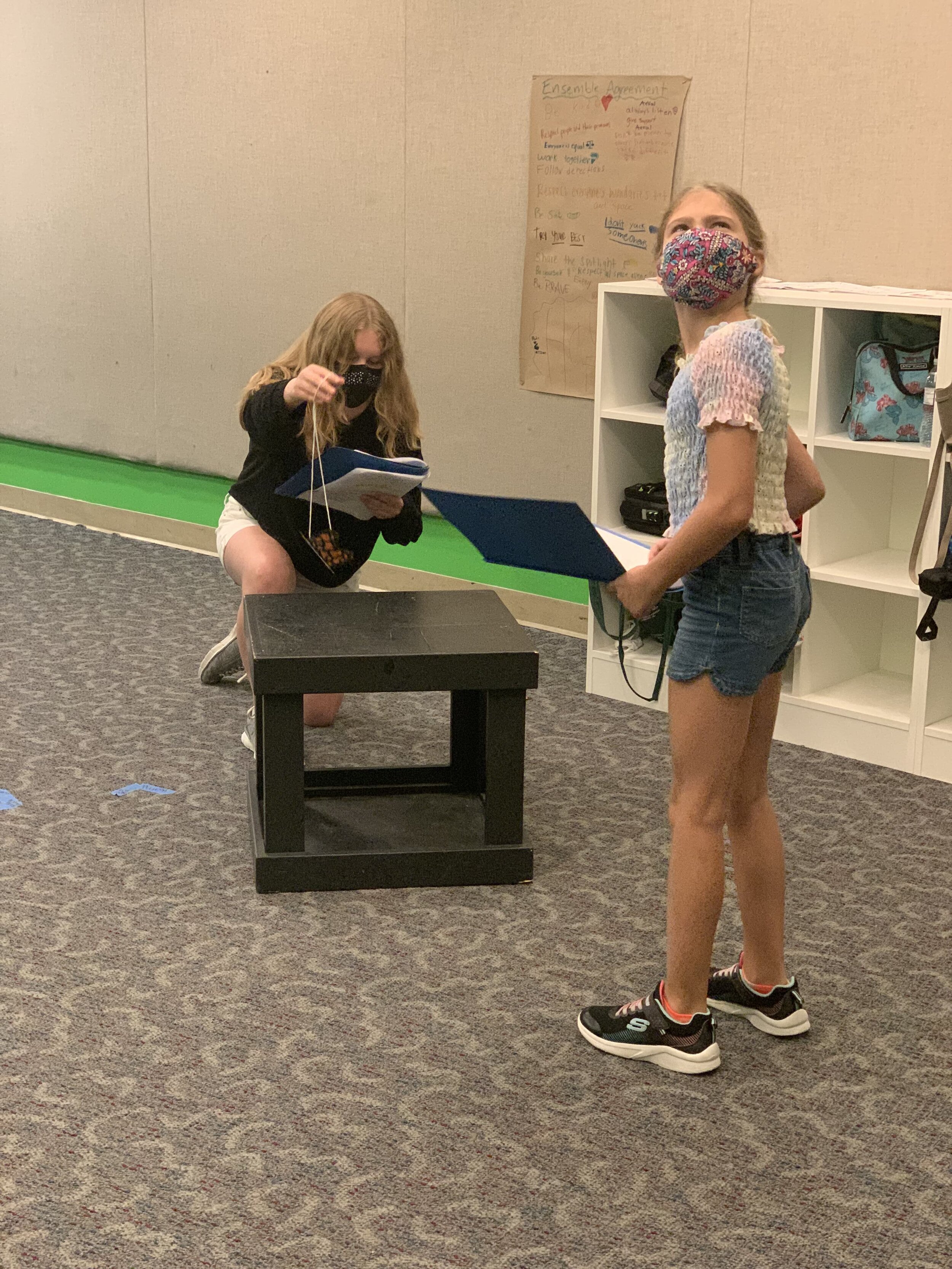
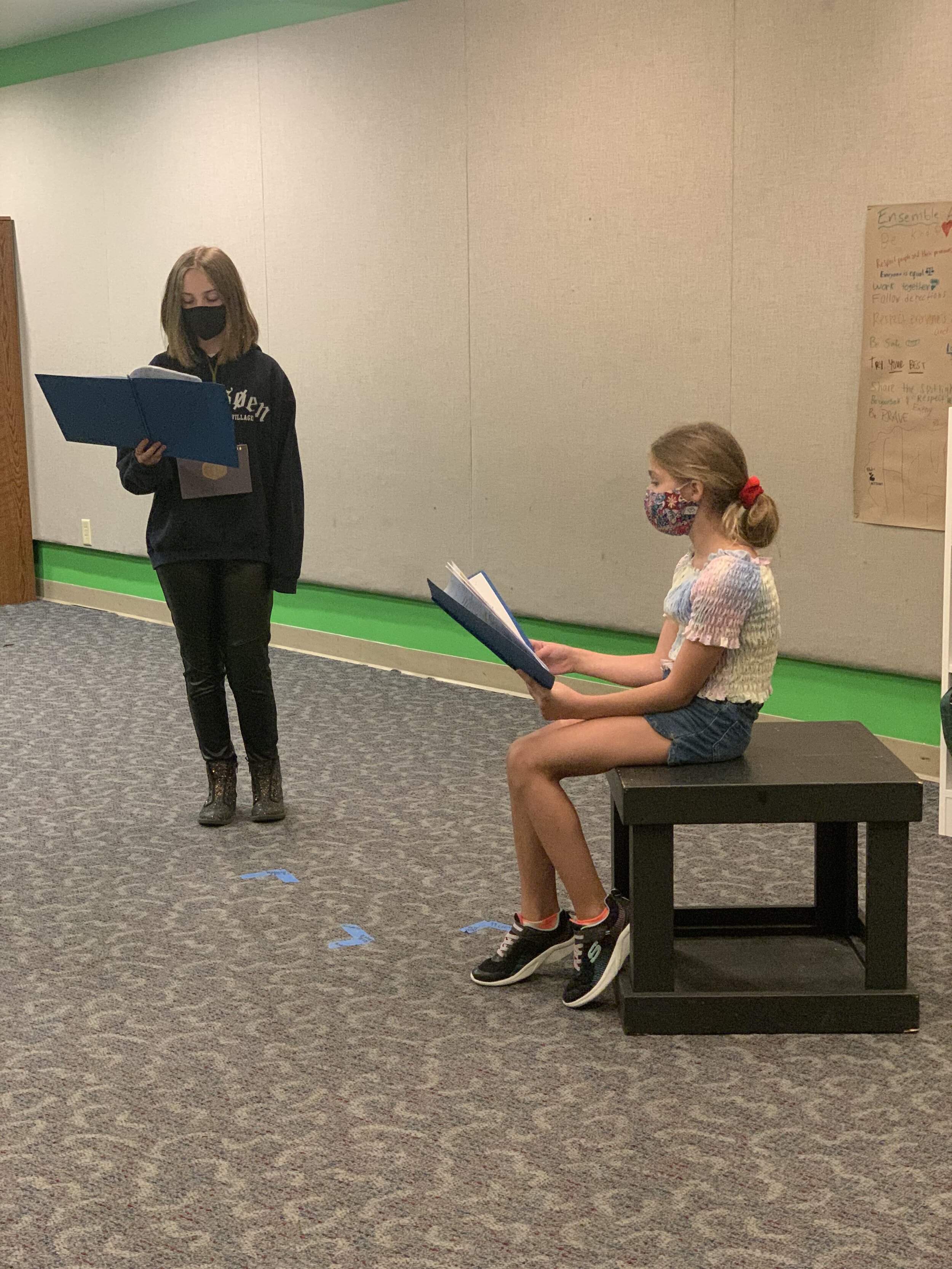
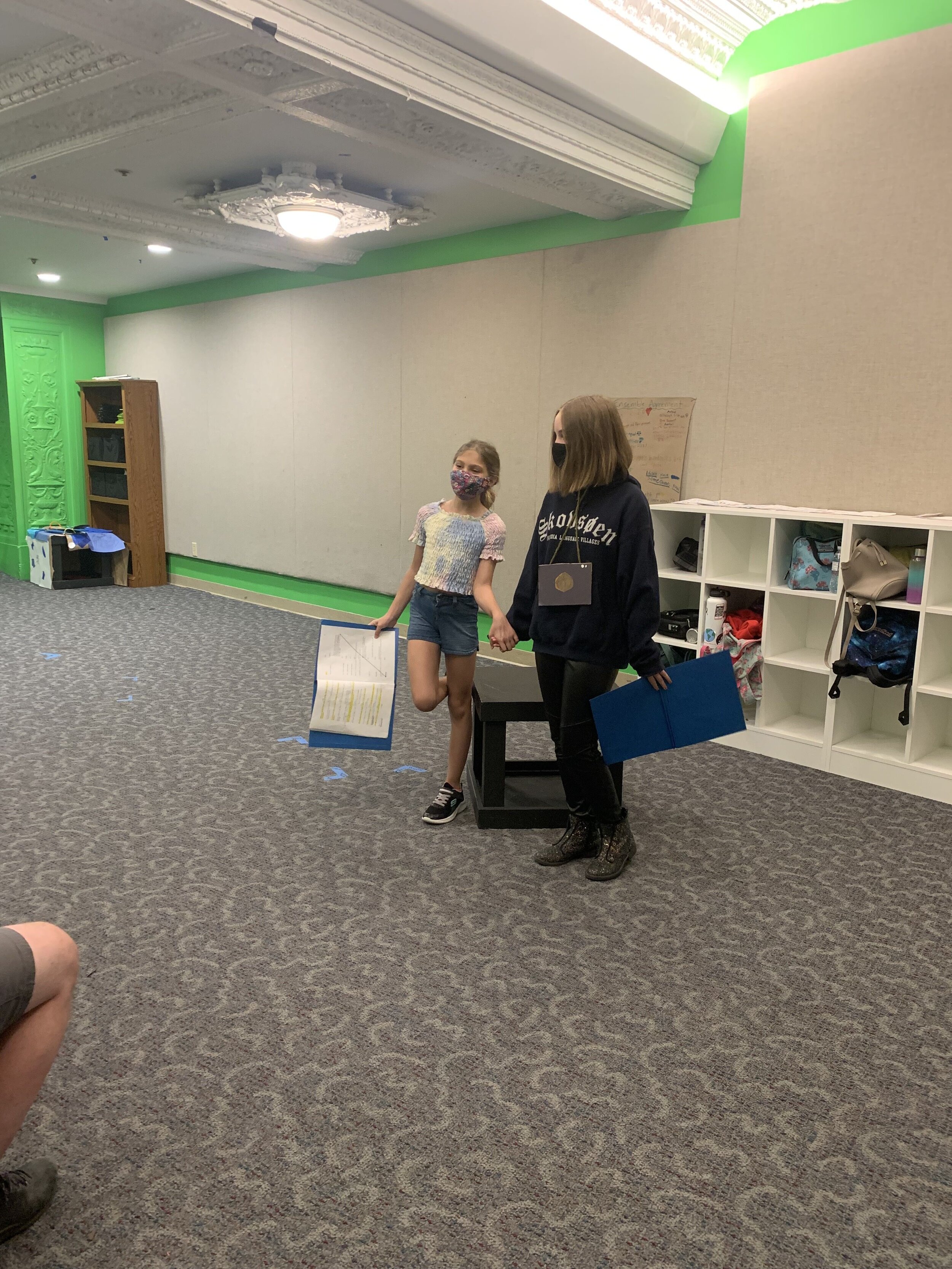
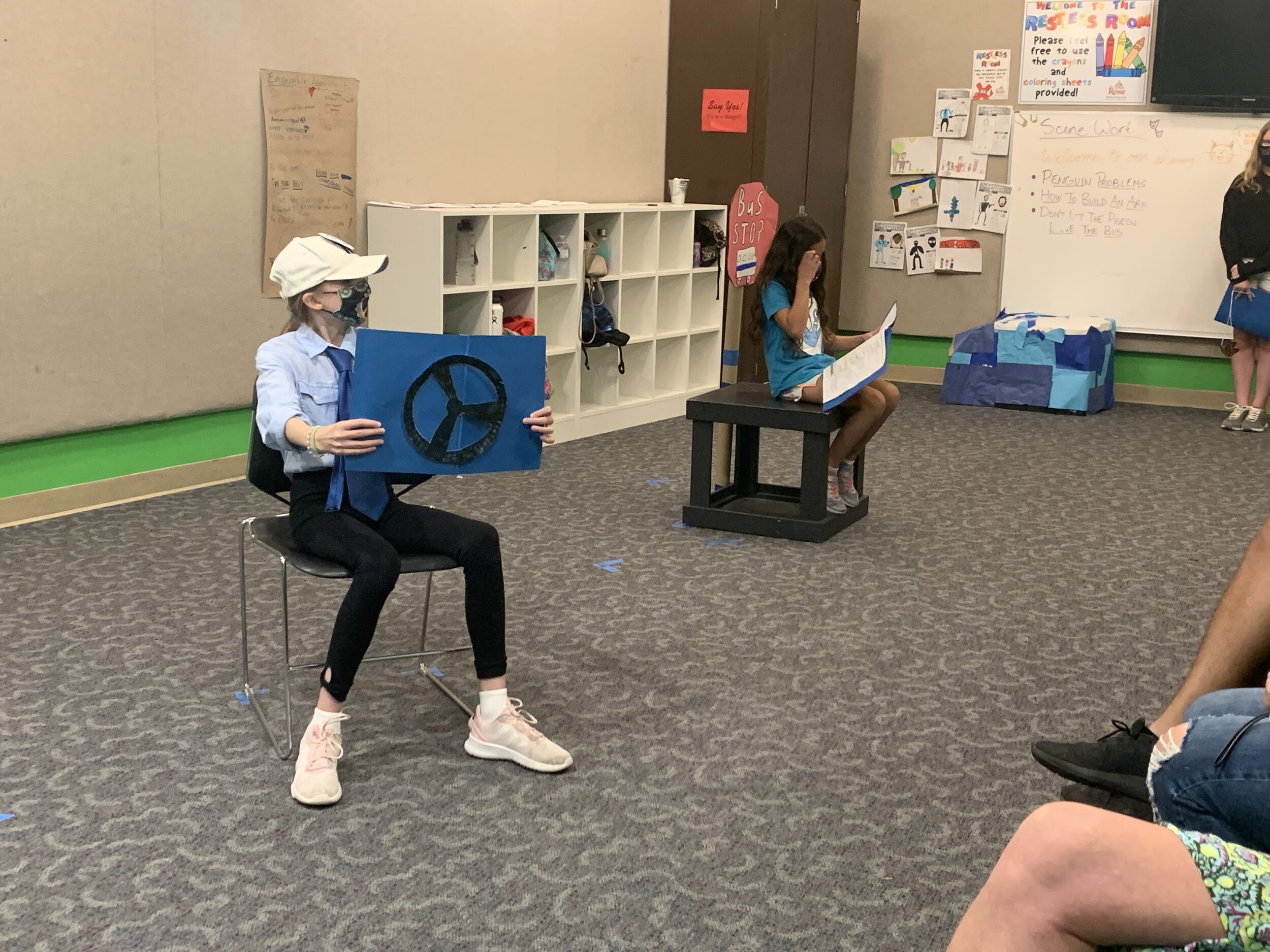








Something new that I was introduced to was role drama. Role drama requires creating rules and characters in a given world, exploring scenarios and possibilities in that world, and bookending when out of “role.” I worked with role drama in the worlds of Star Wars, Onward, Soul, Descendants, Pokemon, and Daniel Tiger’s Neighborhood. With different ages, there were things that would work better or not as well, but some things that I always struck gold were finding a place to go in role, knowing how to get there, and how to return; everything else is at the liberty of the ensemble. Role drama demanded that I be truly invested in the character I created and the world I live in, as well as allowing a freedom to really explore myself unconditionally. This, of course, goes for young people as well. I believe that this art can be explored and utilized with any age group, and that is especially important to me as an EC-12 educator.
Reflecting on my weeks as a teaching artist, however, I’ve once again found my passion for classroom teaching in a public school setting. The skills and perspectives I’ve gained will live and grow with me, but I know the classroom is where I thrive. Teaching artists are a different breed of educator. The drive, versatility, and flexibitlity needed of a teaching artist is different from that of a public school teacher. Both are vital to young people and their growth as empathetic, kind humans. I have seen from the perspective of young people in a unique way that I will cherish. Similarly, I have learned how to create an environment that young people can safely foster who they are in an equitable, accessible way. The artists and the young people I’ve met have shaped me into an ever-changing ball of magic clay that will continue to reshape and reform in order fit the needs of every young person that crosses into my classroom.




